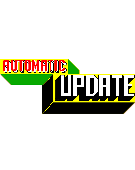As with any vibrant art form, new media finds itself historicized in multiple and evolving ways. Significant attention has been paid to whether the field is alive, dead (date negotiable), or risen from the grave, and to defining its constituent elements. Automatic Update, an exhibition at New York's Museum of Modern Art organized by Barbara London, argues that new forms of media art rose with the swell of the dot-com era and became mainstream in its wake. The five installations included, all drawn from the moment after the bubble burst, speak less to the internet or interactivity and more to a culture saturated with media of all kinds. As markers of this designated cultural moment, the works on view vary widely in their ideas and approaches. Jennifer and Kevin McCoy explore the interplay between the construction of cinematic genre and the development of personal history in Our Second Date (2004). Xu Bing ponders remote communication in Book from the Ground (2007, and in-progress) in which a dialogue between two individuals, separated by a mylar screen, is translated into a vocabulary of computer-like icons. Also featured are new and recent works by Cory Arcangel, Paul Pfeiffer, and Rafael Lozano-Hammer. It's arguable whether new media art has become mainstream, yet the assertion that the Internet has fundamentally changed contemporary culture and propelled new art forms is undeniable. This influence is explored in screenings organized by London with Hanne Mugaas that run concurrently with the exhibition, including signature works by film and video-makers such as Iara Lee, Kristin Lucas, Takeshi Murata, Miranda July and Marcin Ramocki, among others. Automatic Update is on view until September 10th. - Lauren Cornell
